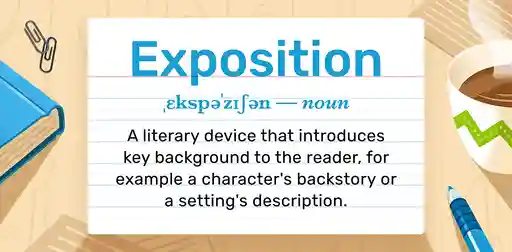Posted on Jun 16, 2020
What Is a Round Character? Definition, Examples, and Traits
Tom Bromley
Author, editor, tutor, and bestselling ghostwriter. Tom Bromley is the head of learning at Reedsy, where he has created their acclaimed course, 'How to Write a Novel.'
View profile →We don’t live in two dimensions. But what about characters? Saying they are multi-dimensional or “round" is a compliment frequently paid to characters, but there is often some confusion to what the term “round” really means. This can make it difficult to tell if a fictional figure is round or not, and why it even makes a difference.
So, what is a round character? Are they, by definition, better-written? In this post, we define the qualities of a round character, illustrated by multiple examples from literature which demonstrate what makes round characters so compelling.
Round character definition
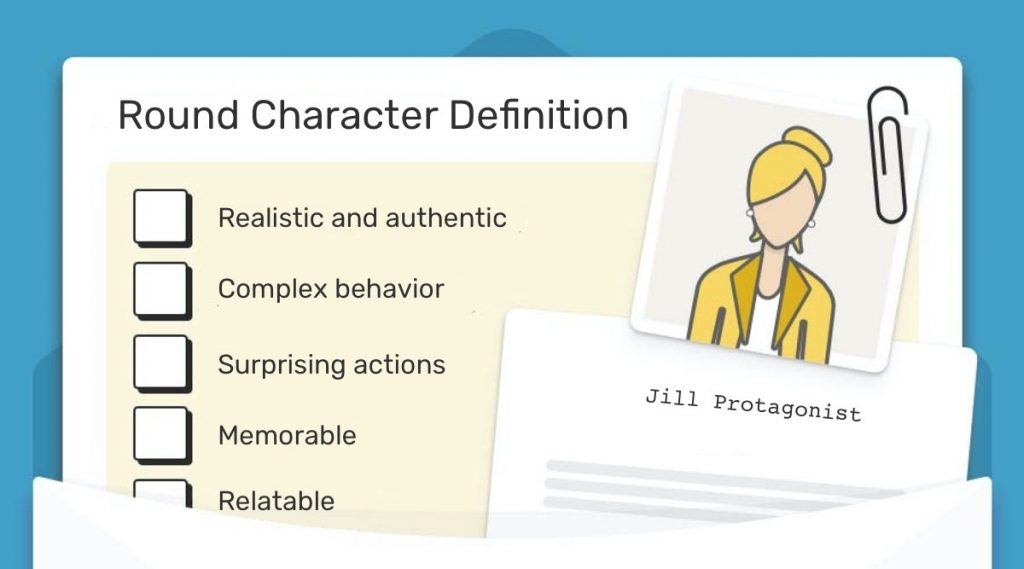
In fiction, round characters are lifelike figures with complex, multifaceted personalities. They possess depth and dimension, and often undergo personal development over the course of a story.
Round characters are considered an asset to any narrative as they:
- Make stories more realistic and authentic in their emotion. They have behaviors and personalities we recognize from real life.
- Generate intrigue via their complexities and surprising actions. We want to know more about them.
- Are memorable and relatable. We identify and empathize with them, and become invested in the outcome of their story.
Readers often refer to “round characters” in describing those that seem recognizably real — like they could exist in our world. These characters feel like real people because their motivations, goals, weaknesses, and personal story lines have been fleshed out in nuanced detail. In other words, there is more to them than what exists on the page.

FREE COURSE
How to Develop Characters
In 10 days, learn to develop complex characters readers will love.
Round vs. Flat Character
In contrast, flat characters have little complexity or depth of personality. They can be captured by just a few words or by their “type”: mad scientist, evil stepmother, animal sidekick. Despite the common assumption, it is important to note that there is nothing inherently “better” about a round character over a flat one — flat characters can be highly effective and entertaining in supporting roles or in plot-driven stories, adding color and assisting the development of the primary characters. But many of the most memorable and relatable figures from fiction are likely to be round characters: these fictional figures seem deeply human, creating life on the page that speaks to our own experiences.
The concepts of “round” and “flat” characters were first introduced in E.M. Forster’s 1927 book, Aspects of the Novel, where he wrote:
The test of a round character is whether it is capable of surprising in a convincing way. If it never surprises, it is flat. If it does not convince, it is flat pretending to be round. [A round character] has the incalculability of life about it — life within the pages of a book.
In other words, a round character is one whose actions are both inevitable and unpredictable.
A round character is not necessarily dynamic
You will often see the terms ‘dynamic character’ and ‘round character’ used interchangeably — though a distinction must be made. A dynamic character is one whose worldview is changed by the end of a story — undergoing a major shift in perspective or personality.
While a round character may be dynamic (and many of the most compelling heroes and villians evolve in their values or undergo change), they might also have static personalities and beliefs. "Roundness" refers to the depth and dimension of the character and does not require change.
Albus Dumbledore, the Hogwarts headmaster from Harry Potter, is one such character. A man of many secrets and contradictions, he changes very little over the course of the series, and his attitude and worldview remain constant.
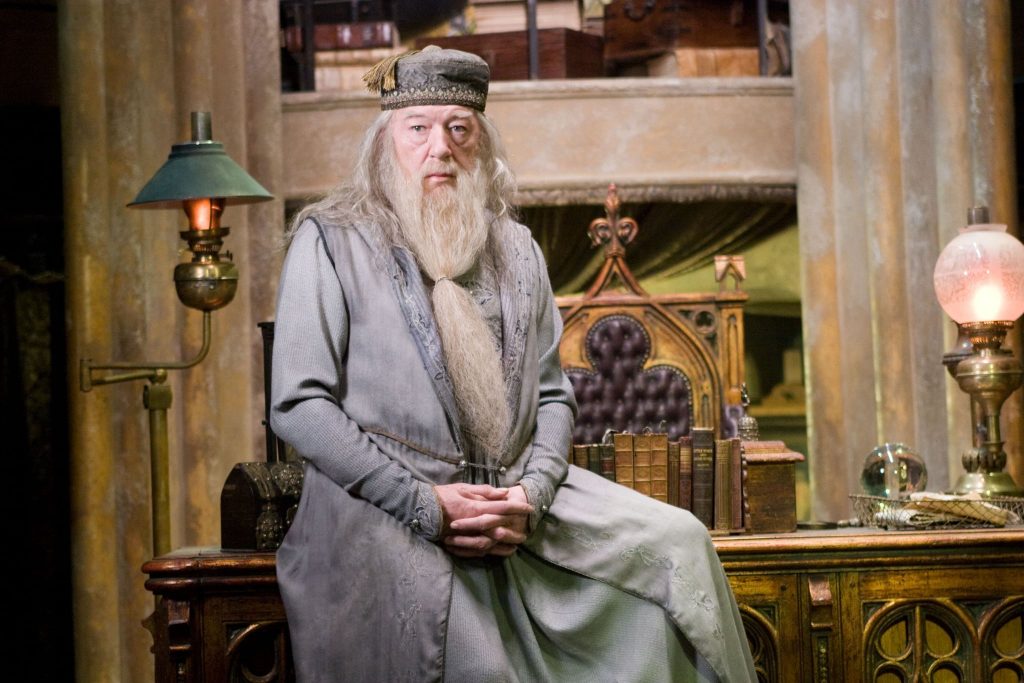
Characteristics of round characters: a guide for writers
In his definition, Forster hits on two essential aspects of the round character: 1) they behave in a way that is surprising, but 2) they must also be convincing. Rather than being completely predictable or formulaic, they appear human — like people you know in real life.
Round characters will often feature:
- Personalities with multiple facets and depths
- Internal conflict
- Flaws and Contradiction
- Emotional development and discovery
Let's look at each of these features in more detail, to see how a writer might apply them to their own characters to round out their personas.
Depth of personality
While a round character may adhere to elements of stereotypes, they shouldn't be bound by a single one. If your character can be summed up as "a regular schoolyard bully," dig a little deeper.
Round characters should have convincing behaviors, temperaments, and compelling reasons for doing the things they do. Not all characters will appear fully-formed and rounded on their very first page: they may start as a stereotype but show their depth as they progress through the story. The multiple facets to a round character’s personality are often revealed to the readers gradually, adding greater nuance and dimension to the portrait. Characters like The Hobbit’s Bilbo Baggins might never plausibly exist in our world, but his relatable conflict about whether to stay at home or embark upon a dangerous path allows him to rise in three dimensions from the page and feel like he might enter into real life.
Creating a detailed character profile can help you plunge into the depths of your fictional cast and figure out who they are. Ask questions of your character, such as:
- Where are they from?
- What are their goals for the future?
- What are they passionate about?
- What scares them?
Round characters have a sense of fullness to their lives, which the stories capture only a limited snapshot of. So try to envision detailed backstories and imagine everything that occupies and energizes them beyond the bounds of the plot.
Top Tip: Download a handy character questionnaire to help you flesh out your characters:

FREE RESOURCE
Reedsy’s Character Questionnaire
40 questions to help you develop memorable characters.
Internal and external conflict
Round characters confront internal and external conflicts, and reveal their values and motivations through the choices they make and the approaches they take to confronting challenges. These conflicts may take several different forms. It might be an epic battle or consuming existential crisis. Or it could be a failed romantic relationship or an internal struggle to confront guilt over past actions. What matters is that there is something at stake for the character — this is why readers emotionally invest in them.
Flat characters often face external conflicts, but round characters are further distinguished by the fact that they face both external and internal conflicts. For instance, Batman battles the villainous Joker but also confronts the dark impulses within himself. These internal conflicts provoke emotional discovery and illuminate their desires and beliefs, rounding out their psyche. There is often a push and pull between what a character wants and how they wish to be perceived by others which can work as an engine for creating further depth.
Top Tip: Use internal conflict to help reveal qualities of round characters, such as:
- Values: How do they react to conflict?
- Desires: How do they ultimately want this conflict to be resolved?
- Fears: What is the worst-case scenario of this conflict? How confident does the character feel in their ability to resolve it?
- Development: How does the conflict change the character?
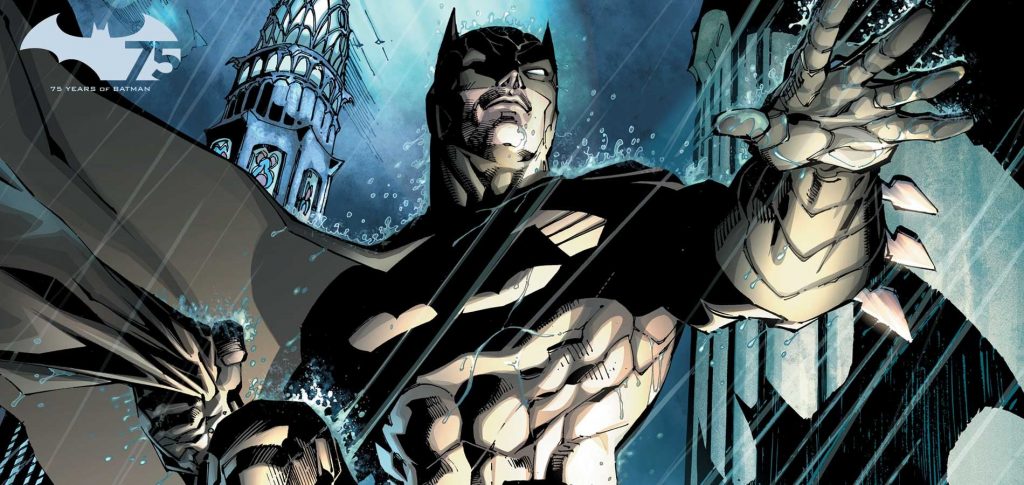
Flaws and Contradiction
While round characters may have defining strengths and positive traits, they should also have weaknesses and contradictions that prevent them from veering into cliches. They are complex, stimulating readers’ interest and imagination as they conflict with others or themselves in believable ways that challenge their values and provoke further introspection and development.
This is what Forster meant when he talked about round characters being “surprising” — we can’t always guess exactly what they are feeling or how they might act. The idiosyncrasies and contradictions should not exist for contradiction’s sake, but be motivated by a desire to reveal something new about the characters. Think of Dexter’s Dexter Morgan, a serial killer who murders people, but only those also guilty of evil crimes. The contradiction between his day job as a blood-spatter analyst and his night hobby of killing, as well as the tension between the apparent evil of Dexter’s murders and his strong moral code, make him a round protagonist. Characters’ vulnerabilities and idiosyncrasies remind us that even heroes or villains are still relatable as humans.
Top Tip: Make sure your character has flaws and contradictions that are relevant, relatable, and realistic — revealing something new about them that feels essential to who they are, not random.
Emotional discovery
To further add to Forster’s element of surprise, round characters can surprise us in their development, evolving from the person we thought we knew and revealing who they truly are.
Alongside this continued character development, we often see them have moments of self-discovery and growth. They don’t have to undergo world-shattering epiphanies, but often face mental and emotional changes as they pursue their goals or confront their fears, grappling with their weaknesses or seeing their dreams in a new light. Frankenstein’s Victor Frankenstein achieves his ambition of reanimating life from human corpses, but comes to recognize the arrogance of his scientific endeavor as the ramifications of his creation torment him with guilt and terror.
We might start off seeing only the tip of the iceberg when it comes to the full emotions and thematic soul of their stories, but as their journeys progress, they start to discover their true depths, prompting new revelations for themselves and for readers.
Top Tip: Identify your character’s moment of realization: what is their moment of revelation or emotional breakthrough?
Examples of round characters
As we mentioned earlier, many of the favorite protagonists you feel closest to are likely to be round. But how are their complexities revealed? Now that you have a clearer idea of what makes a round character, let’s look at some examples to illustrate how multi-dimensionality is created in different genres.
1. Elizabeth Bennet in Pride and Prejudice
Defining characteristic: contradictions
Elizabeth Bennet has a defining flaw — her pride — but she contains multitudes. Witty, whip-smart, and able to elevate herself above the snobby gossip of English society, Lizzy is also prone to making hasty judgments — as she does about Mr. Darcy, a wealthy estate owner she finds haughty. Her internal contradictions and eventual ability to recognize her misconceptions make her a round and relatable heroine.
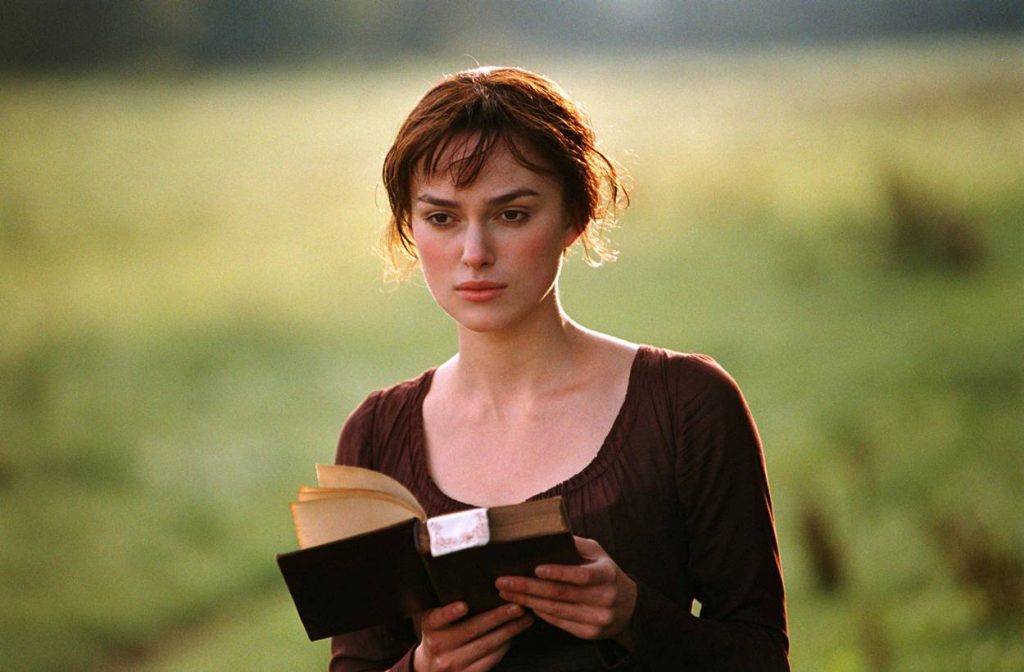
2. Scout Finch in To Kill a Mockingbird
Defining characteristic: Self-discovery
Scout is a misfit tomboy growing up in the American South. She has been raised by her father to have a strong moral compass, but due to her young age, she is naive to the racism rife in her small-town setting. Scout’s arc is filled with misunderstandings and moments of self-discovery, as she comes to have a more nuanced view of good and bad and develop her own ethical consciousness and sense of justice.
3. Jay Gatsby in The Great Gatsby
Defining round characteristic: tension between the image he wishes to portray and his reality.
Jay Gatsby is an enigma whose hazy past is slowly revealed as we follow his obsession with his childhood sweetheart. He has multiple sides — he is the exorbitantly wealthy Jay Gatsby who has achieved mythological status thanks to his lavish, high-society parties in East Egg. But he is also the vulnerable and hopeful James Gatz who has humble beginnings in rural North Dakota. He faces immense emotional conflict and insecurity behind his millionaire facade, as he desperately tries to assert his status to win back the woman he loves, and this insecurity seeps into every facet of his being, right down to the unique way he speaks.
4. Celie in The Color Purple
Defining round characteristic: her present outlook informed by a complex past.
Told through diary entries and letters, The Color Purple creates profound empathy for its protagonist, Celie, giving readers insight into her most private thoughts and moments of emotional revelation. Celie is an uneducated Black woman in the American south who lacks rights and endures horrific abuse. But she remains resilient in spirit, her nuanced and hopeful outlook making her compelling to root for and relate to. Celie is also a dynamic character, undergoing a journey of self-actualization to become reborn as an independent and confident woman who loves herself and the world around her.

5. Hamlet in Hamlet
Defining round characteristic: his internal conflict of indecision.
Hamlet is a man who cannot make up his mind. Hamlet’s father has been murdered, and he believes his uncle Claudius is responsible, but Hamlet remains indecisive about avenging his father’s death. He remains unsure whether his uncle actually did murder his father, and even when he thinks he knows the truth, he is unsure when he should kill Claudius in revenge... or whether he should kill him at all. Hamlet undergoes intense psychological conflict and contemplation, which illuminates the depths of his philosophical profile and makes him one of Shakespeare’s most challenging roles to play.
6. Holden Caulfield in The Catcher in the Rye
Defining round characteristic: his depth of personality, petulant on the outside, and sensitive underneath.
Holden, a wandering boarding school reject, has a strong sarcastic voice that makes him a realistic teenager. Yet he is also an unreliable narrator, providing confusing accounts of events and inconsistent judgments on people around him. We learn more about him through his actions and behaviors, which are often surprising and self-destructive, slowly peeling back Holden’s layers of defenses as we see how troubled and sensitive he is underneath the persona he has put up. Holden feels like a real person, not simply a “phony,” becoming one of the most enduringly relatable protagonists for teenagers and non-teenagers alike.

FREE COURSE
How to Write Believable Dialogue
Master the art of dialogue in 10 five-minute lessons.
7. Severus Snape in the Harry Potter series
Defining round characteristic: his multiple sides.
Severus Snape might initially appear to be a flatly villainous character, tormenting Harry Potter and always looking on with a menacing stare. Yet as the series progresses, he constantly keeps readers guessing about his true nature and allegiances. Ultimately, Snape reveals the heart behind his sarcastic and scathing exterior and the love and loyalty that drives him.
8. The narrator in Invisible Man
Defining round characteristic: his internal identity crisis.
Living as a Black man amidst racial prejudice in 1930s America, the nameless narrator feels socially invisible, consistently humiliated by powerful white people and denied a presence in white-dominated society. He struggles with how to feel seen while maintaining his Black self, uncertain about getting involved with various racial reform or Black nationalist movements. He undergoes a constant identity crisis, trying to find his place as an individual while considering his commitments to broader political and social causes.
Many of the characters that stick with us are round characters. Round characters move and mesmerize us; they promote feelings of empathy and invite us to view them as real people, seeing the world through their eyes. The deeper and more complicated your characters, the more realistic and relatable they feel. They become not just text on the page but flesh-and-blood beings — creating life that leaps right from the story and into the minds and memories of your readers.






